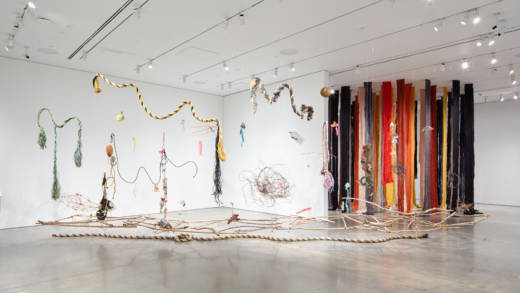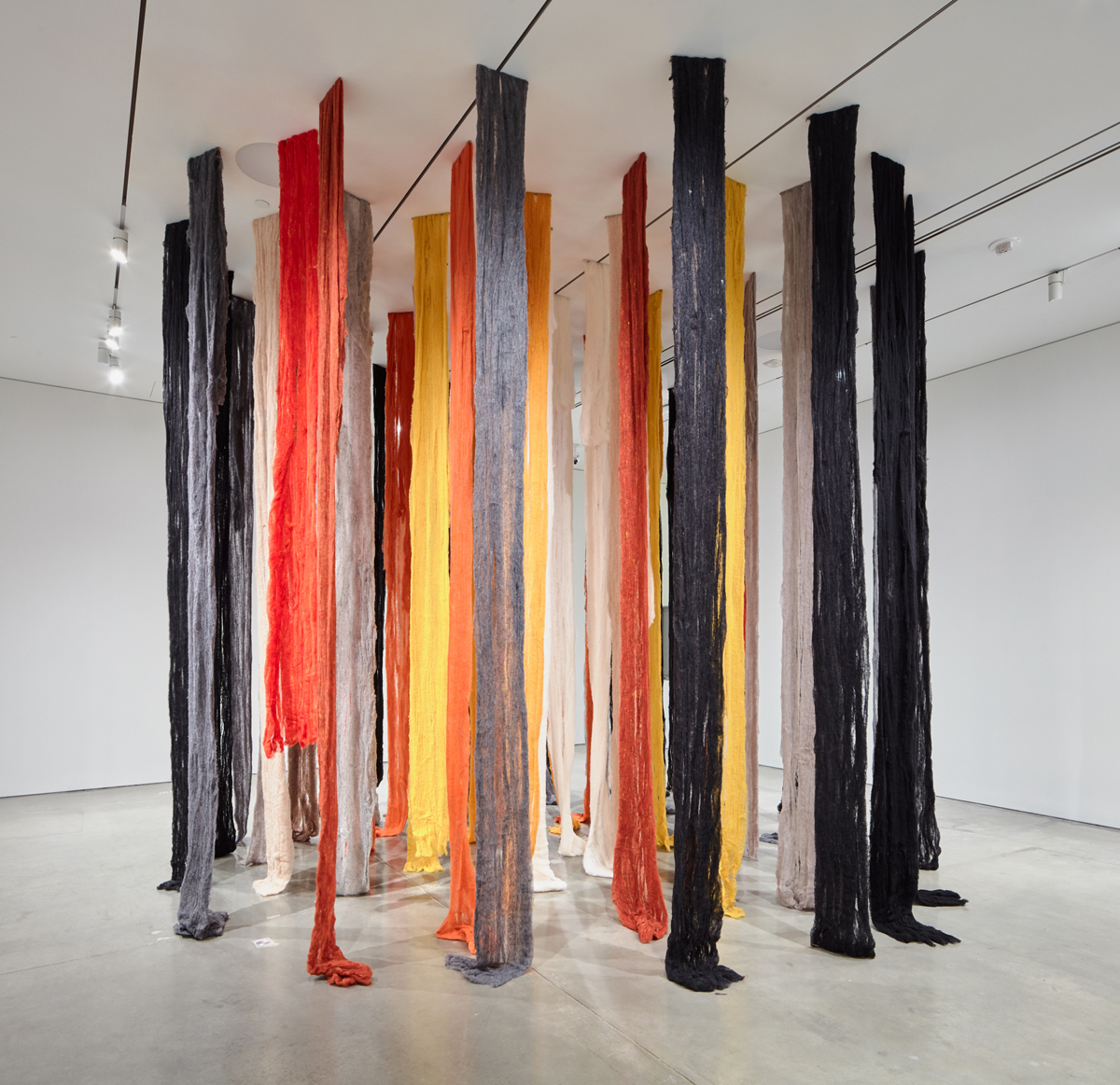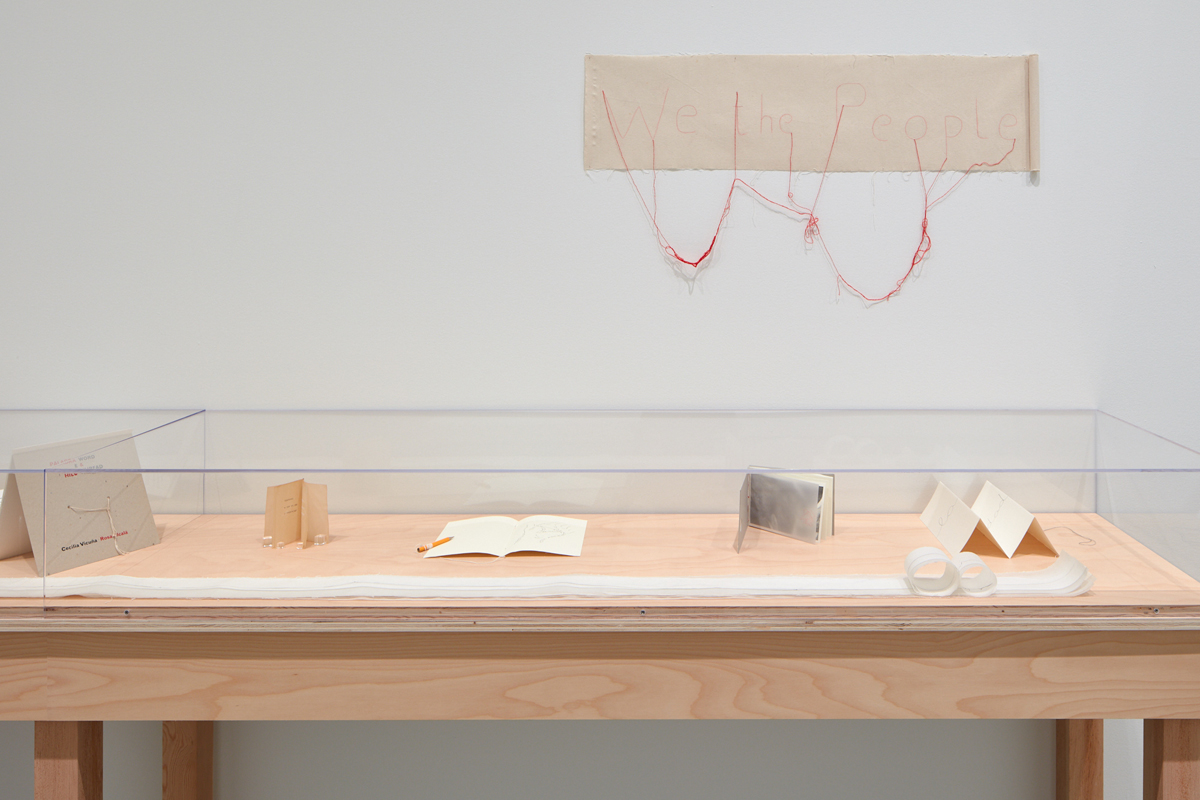As I walked away from Cecilia Vicuña’s survey exhibition at the Berkeley Art Museum and Pacific Film Archive, I thought about accumulation.
Representing a career spanning four decades, from her childhood in Chile to an adult life spent across multiple continents, About to Happen demonstrates an accumulation of objects and time, but also an accumulation of knowledge—often ancestral, ancient knowledge. At a time when newness is privileged (especially here, in the land of real-life beta testing) and objects are discarded in favor of cloud-based, intangible systems, this exhibition comes as a refreshing reminder that things carry meaning.
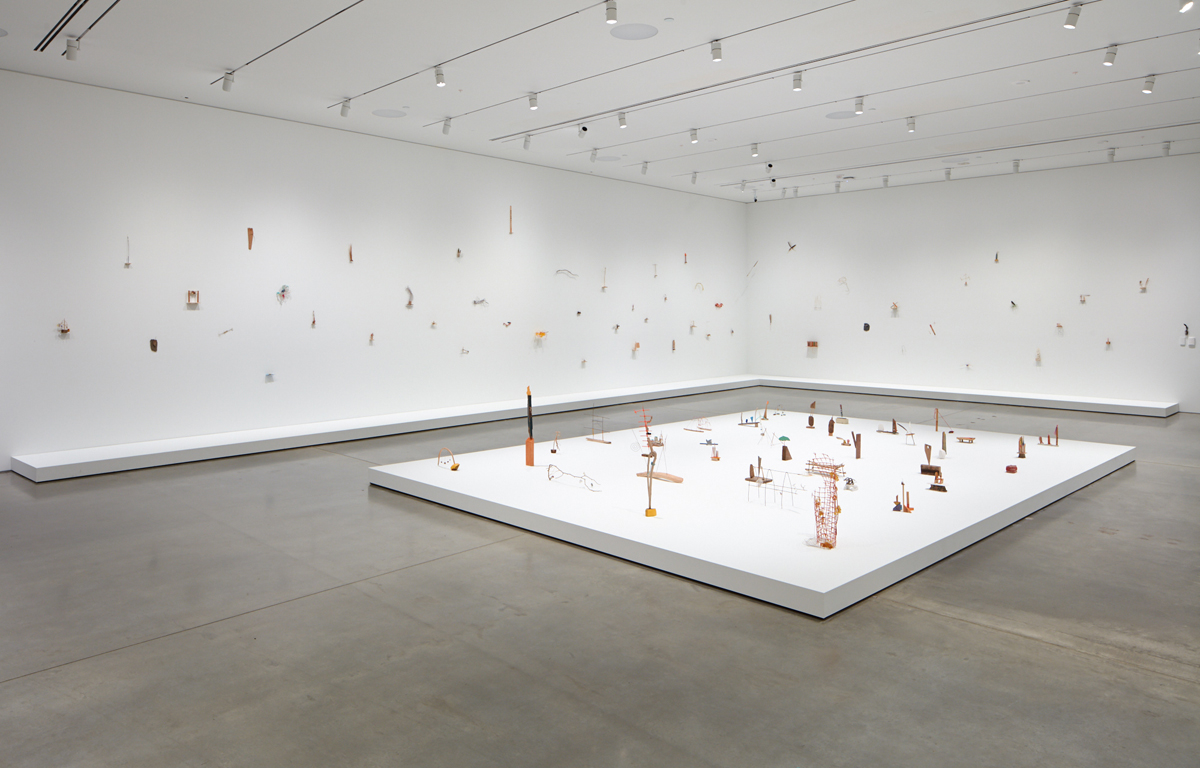
The show, co-curated by Andrea Andersson of the Contemporary Arts Center, New Orleans and UC Berkeley professor Julia Bryan-Wilson (and organized at BAMPFA by curator of modern and contemporary art, Apsara DiQuinzio), occupies just three rooms in the museum’s downstairs space, but it’s filled with well over a hundred objects. Most of those are Vicuña’s Precarios, small sculptures made from driftwood, bits of plastic, electrical wire, fishing line, rocks and feathers. They cover two walls of the exhibition’s largest gallery and scatter across a large, low pedestal like tiny ships on calm sea of white paint. They’re impossibly delicate, made not just of ephemeral, discarded materials, but held together impermanently by bits of string, or simply by gravity.
Vicuña began the series in 1966, when she was still a teenager, making (actually) impermanent sculptures along a Chilean beach called Con cón, where the Aconcagua River meets the Pacific Ocean. During the military coup that brought Augusto Pinochet to power, Vicuña was studying art in London and she found herself involuntarily exiled from her home country.
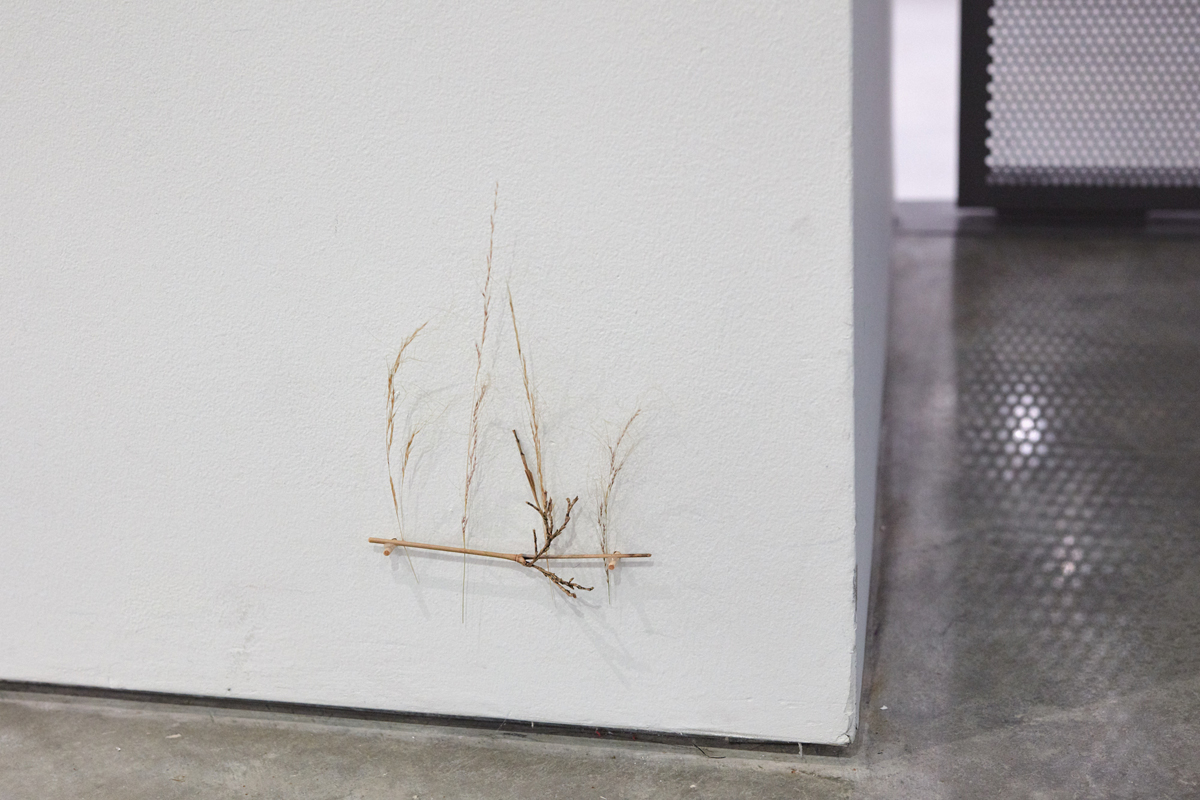
Made, exhibited and transported over 40 years spent across Europe and the Americas, the Precarios (which Vicuña also calls basuritas, or “little garbages”) become stand-ins for the people and things discarded by society—Pinochet’s victims, the world’s indigenous populations, the natural resources that would sustain us. The playful placement of the small sculptures hints at the resilience of marginalized communities and species, with two pieces installed low to the ground on the ramp leading down to the exhibition, bits of grass and sticks I didn’t even notice until I received installation images from the museum.
